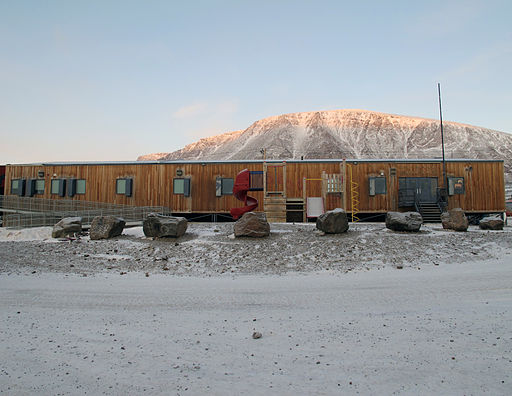The Prime Minister is wrapping up his ninth annual trip to Canada’s North this week. This year, like every year, the stealth Ski-Doo is loaded up with announcements.
Presents for everyone!
So what are women in Nunavut going to find in their stockings this year? The bulk of federal investments in economic development in the North are funnelled through the Canadian Northern Economic Development Agency, which has an annual budget of just over $50 million (although that number is projected to decline over the next few years). Much of that $50 million is currently directed towards resource development — training for folks to work in the resource sector, infrastructure to get to the resources, research to tell us where the resources are.
Women in the North want jobs and training just as much as men do. With employment levels and wages that that are consistently below the national average, and a significantly higher cost of living, it is no doubt that women (and men) in the North need those jobs. And they need them to pay enough to meet the disproportionately high costs of food and housing.
So is the federal government’s investment in resource extraction going to do the trick?
Not so much.
Nationally, women hold 18 per cent of the jobs in the extractive sector and 12 per cent of the jobs in construction. Women working in oil and gas industries experience one of the largest wage gaps across industries — with paycheques that are 63 per cent of their male peers. In mining women make 66 per cent on the male dollar. Those are the Canada-wide figures.
In Nunavut, the median employment income of women working in the mining sector is just under $20,000. Not only is there a gender wage gap of 69 per cent, but the gap between northern and southern paychecks is immense. Southern paychecks in the mining sector are more than double what they are in the north. These gaps are certainly attributable in part to seasonal work patterns. But that is the reality of life in the North and any economic action plan for northern development is going to have to adapt.
These gaps between men and women and north and south are bad news. Bad news for all 90 women who work in mining, quarrying and mining support activities in Nunavut. That’s right, according to the National Household Survey, there are less than a hundred women in Nunavut working in this sector right now (and just over 300 men).
What are women in Nunavut actually doing for work? The top three jobs are, wait for it, cashier, cleaner and office support staff. Women in Nunavut are earning between $8,000/year (cashiers) on average and $29,000/year (office workers). The good news, among the jobs women in Nunavut actually have, some do pay enough to cover the basic cost of living. Those jobs are exactly the same two popular, well-paid jobs held by women across Canada: teacher and nurse.
Why do women work in these jobs? I can’t help noticing that all of these jobs offer schedules that could accommodate care for children and family members. Cashiers, cleaners and nurses all work shifts. You can’t always choose your shift, but there is a greater possibility that you can work around your kid’s school schedule. Teachers, of course, have the same schedule as their school-age children.
Those who work in mining and quarrying? Well, they work shifts too. But those shifts require them to be at the mine site for weeks, not hours. Like it or not, the majority of child-care work is still performed by Mom and not Dad. So when push comes to shove, it’s going to be Dad, not Mom, who can spend two and three weeks away from home at the mine site.
An economic plan that would work for women in the North has to accommodate the realities of where they work, how they work and the constraints imposed by their unpaid work. The federal government is investing in education in the North, but much of it is post-secondary education (which is a fine thing). However, with a high school completion rate of 39 per cent, ramping up investments in primary and secondary education would be an immediate benefit to both school-age children and their working mothers. With life expectancies that are more than 10 years below the Canadian average, a few more nurses wouldn’t go amiss either.
A northern economic development plan that doesn’t adapt to how women and men actually live and work in the North, is about as useful as a Ski-Doo in the desert. It’s cool and all, but it’s not getting anyone where they need to go.
Photo: By Timkal (Own work) [CC-BY-SA-3.0], via Wikimedia Commons



